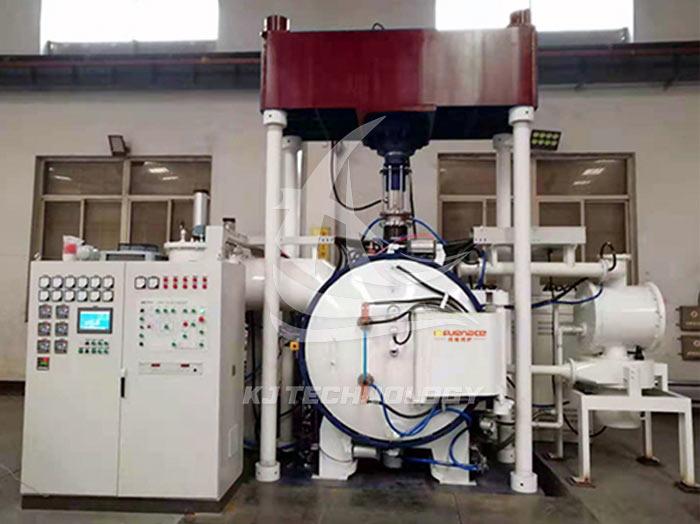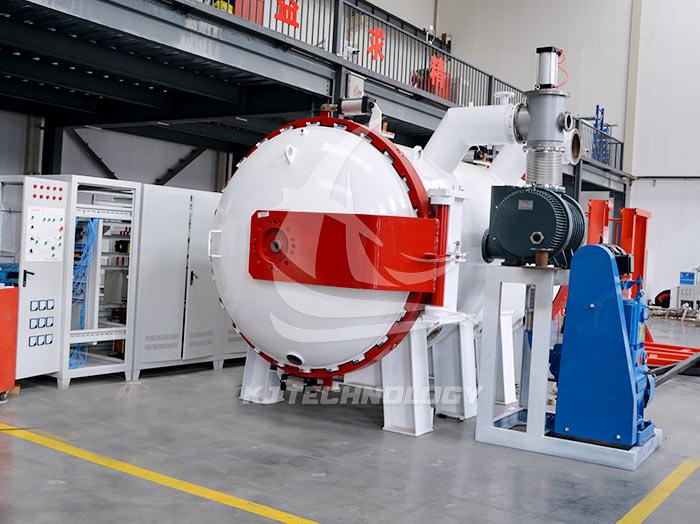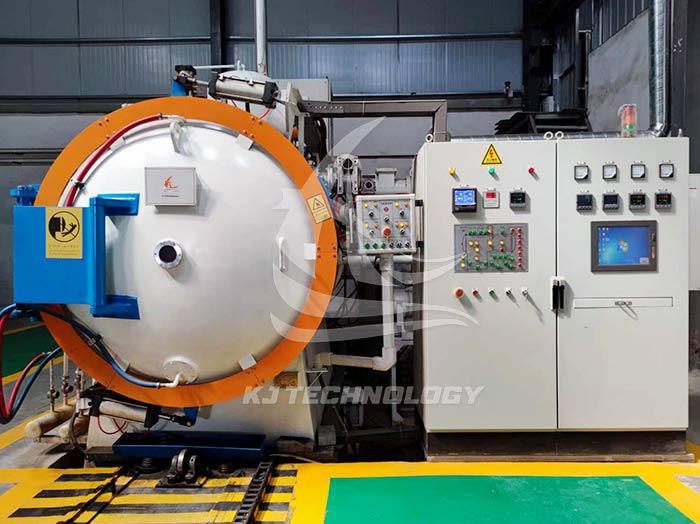How to choose a vacuum hot press furnace?
 07-07-2025 Author: KJ technology
07-07-2025 Author: KJ technology
When choosing a vacuum hot press furnace, a comprehensive evaluation should be conducted from five core dimensions: process requirements, equipment performance, safety and reliability, energy consumption and environmental protection, and after-sales service. The specific selection points are as follows:
1. Clarify process requirements and match equipment parameters
temperature range
Determine the maximum sintering temperature based on material characteristics. For example, ceramic materials may require temperatures above 2000 ℃, and equipment with high-temperature heating capabilities (such as graphite or carbon carbon composite heating elements) should be selected.
Case: The vacuum hot press furnace uses resistance wire heating, with a maximum temperature of 1200 ℃, suitable for the preparation of medium and low temperature composite materials; The HPW series has a maximum temperature of 2200 ℃, which can meet the needs of hard alloys, high-temperature ceramics, and other materials.
Vacuum requirement
A high vacuum environment can reduce material oxidation and improve sintering quality. The vacuum degree range should be selected according to the process (such as 10 ⁻³ Pa to 10 ⁻⁵ pa).
Technical comparison: The combination of mechanical pump and Roots pump can achieve medium vacuum, while molecular pump can achieve ultra-high vacuum.
pressure demand
Select the pressure range and pressurization method based on the material properties. For example, silicon carbide ceramics require a pressure of 50-100 MPa and require equipment with hydraulic drive and hard frame design.
Attention to details: Pressure stability and holding time directly affect the density of materials.
Furnace size and load-bearing capacity
Select furnace volume based on workpiece size and batch size..
Load bearing capacity: The material may soften at high temperatures, and it is necessary to ensure that the furnace design can withstand the maximum loading weight.
2. Evaluate equipment performance to ensure process stability
Heating element and heat shield
Heating element: Priority should be given to materials with high thermal conductivity and low deformation at high temperatures (such as graphite, carbon carbon composite materials, tungsten molybdenum wire). Carbon carbon composite materials have thin thickness and low heat storage, which can improve cooling speed.
Thermal insulation screen: using multi-layer graphite felt or tungsten molybdenum material to reduce heat loss (for example, the insulation package of a certain equipment is composed of 0.040 Flexshield surface layer+4 layers of 0.5 "graphite felt, reducing power consumption by 20%).
Temperature uniformity
The temperature difference inside the furnace affects the consistency of material properties. High quality equipment must meet the AMS 2750D standard (such as temperature uniformity of a furnace: ± 20 ° F at 300-600 ℃, ± 10 ° F at 900-2500 ℃).
Optimization design: At least three heating zones+fine-tuning power input to eliminate the difference in heat loss between the front and rear of the hot zone.
Cooling system
Air cooling (pollution-free) is superior to oil cooling (possibly carburizing), but it is necessary to ensure that the cooling rate meets the process requirements. The air cooling speed is affected by air pressure, flow rate, and cooling water flow rate of the heat exchanger (for example, when a certain equipment is air-cooled, increasing the cooling water flow rate can increase the cooling speed by 30%).
control system
Choose a system with high-precision temperature (± 0.1 ℃) and pressure control, supporting multi-stage program temperature control.
Additional features: monitoring, fault display recording, remote monitoring (essential for imported equipment), reducing maintenance costs.
3. Strengthen safety and reliability design
Sealing structure
Double layer O-ring sealing or water-cooled flange can prevent air leakage and ensure stable vacuum environment.
Case: Insufficient rigidity in the design of the furnace door of a certain equipment resulted in an increase in sealing leakage rate, and the actual utilization rate decreased by 15%.
Safety protection device
Essential functions: Over temperature alarm, leakage protection, overvoltage protection, water cut-off alarm.
Detail design: Install travel switch, automatically cut off power when the furnace cover is opened; Air switch tripping protection when current exceeds the limit.
Equipment lifespan and maintenance
Heating element lifespan: The lifespan of graphite elements is about 2000-5000 hours, and replacement costs need to be considered.
Supply of vulnerable parts: Choose suppliers who can provide vulnerable parts such as graphite molds and sealing rings to reduce long-term operating costs.
4. Pay attention to energy consumption and environmental protection, and reduce operating costs
Energy saving technology
Optimizing the layout of heating elements and using efficient insulation materials (such as adding a fifth layer of graphite felt) can reduce power consumption by 10% -20%.
Case: A certain device reduced power consumption by 15% under high temperature and long cycle by improving insulation design.
environmental requirements
Ensure that the equipment complies with local environmental regulations and reduces emissions of waste gas and wastewater. For example, air-cooled systems do not require oil pollution treatment and are more environmentally friendly.
5. Choose high-quality suppliers to ensure after-sales service
Technology
Priority should be given to manufacturers with R&D teams and the ability to provide customized solutions (such as Shenzhen Yingdamai Technology designing personalized vacuum furnaces according to customer needs).
After sales service system
Confirm if the supplier can provide quick response technical support (such as 24-hour troubleshooting), regular maintenance, and operational training.
Case: A certain manufacturer provides one-year warranty and lifetime technical support, with a supply cycle of vulnerable parts ≤ 7 days.
User reputation and case studies
Referring to user evaluations in the same industry, priority should be given to suppliers with successful cases (such as Nanjing Weitu Vacuum Technology Co., Ltd.'s HPW series, which is widely used in the aerospace and new energy fields).








